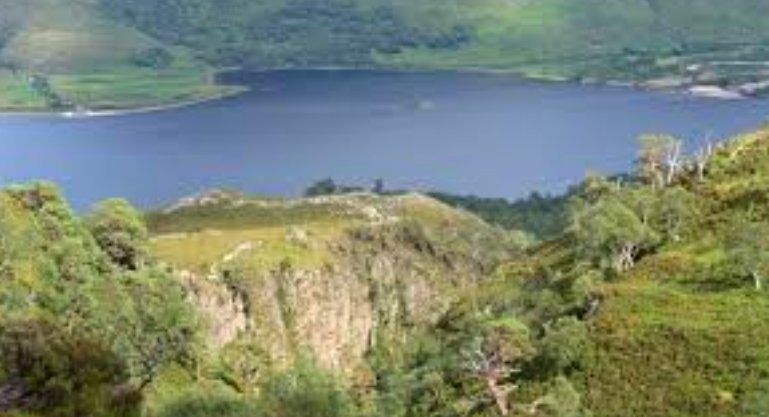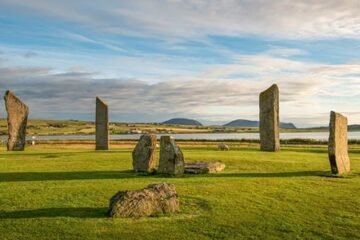Scotland’s landscapes are getting a fresh layer of protection, as the Scottish Government throws its weight behind a newly updated Landscape Charter focused on sustainability, biodiversity, and climate resilience.
The revised document, building on the European Landscape Convention and Scotland’s 2009 charter, lays out a long-term vision for how the country’s natural and cultural landscapes will be valued, managed, and shaped in the decades ahead.
A New Chapter for Scotland’s Living Landscapes
The updated charter doesn’t come with dramatic fanfare or sweeping legislation. But its implications are quietly ambitious.
It signals a policy shift toward “landscape thinking”—an approach that ties together how land is used, how communities thrive, and how ecosystems are protected. The idea isn’t just to preserve pretty views. It’s about making land work better—for people, for nature, and for the future.
This new version emphasises sustainable land-use practices and stronger community input. It also threads climate change response and biodiversity restoration into planning decisions that used to focus mostly on aesthetics or access.
A small document. A big shift.

What’s Actually Inside the Charter?
Think of the charter as a kind of manifesto for land stewardship. It outlines shared values, planning principles, and national aspirations. It’s not a legally binding framework, but it’s designed to shape how government bodies, planners, and communities interact with the land.
The charter lays out priorities like:
-
Supporting nature-rich landscapes that strengthen biodiversity
-
Integrating climate adaptation into how land is used and developed
-
Making space for inclusive community input on local landscapes
-
Encouraging planning systems to consider long-term environmental resilience
Not radical ideas on their own. But stitched together, they reshape how policy might treat everything from peatlands and crofts to wind farms and footpaths.
2009 vs 2024: What’s Changed in 15 Years?
The first charter was published back in 2009. At the time, it was ahead of the curve—one of the early national responses to the European Landscape Convention, which was signed in 2000.
But times have changed. Climate targets are tighter. Biodiversity is in crisis. Rural depopulation has become a real political issue. And the pandemic made outdoor space feel less like a luxury and more like a necessity.
So what’s different now?
One sentence will do: the charter has grown up.
In 2009, landscape was still a niche concern. Now it’s at the centre of conversations about how Scotland feeds itself, powers itself, and supports its people.
Strong Words from Ministers, But Delivery Remains to Be Seen
The Scottish Government’s Environment Minister, Gillian Martin, backed the new charter, calling it “an important milestone in Scotland’s journey toward a more nature-positive and climate-resilient future.”
Officials from NatureScot and Historic Environment Scotland also welcomed the move, saying it gave “greater clarity” to how policy and public bodies could align efforts.
But outside of the official statements, reaction has been more muted.
Some environmental campaigners cautiously welcomed the update but warned that without funding or enforcement, it could turn into just another glossy PDF. Others noted that the charter stops short of committing to landscape-scale restoration targets or hard planning rules.
And let’s be honest—Scotland has a long backlog of green ambitions still waiting for delivery.
Still, it’s something. And it gives shape to a policy area that often slips between the cracks of rural development and environmental law.
Where Does This Leave Scotland’s Landscape Policy Now?
Scotland’s approach to landscapes is already fragmented. Some of it is run through local planning authorities. Some through national parks. Some through special designations like National Scenic Areas, Sites of Special Scientific Interest, or Local Landscape Areas.
The updated charter doesn’t replace any of those systems. Instead, it tries to weave them together more tightly.
Here’s how Scotland’s key landscape policy tools currently line up:
| Policy Area | Responsibility | Landscape Impact |
|---|---|---|
| National Planning Framework 4 (NPF4) | Scottish Government | Sets long-term land use and climate goals |
| Local Development Plans | Councils | Determines what gets built where |
| National Parks (Cairngorms, Loch Lomond) | Park Authorities | Manages conservation and sustainable tourism |
| Nature Networks | NatureScot | Links habitats to improve biodiversity |
| Landscape Character Assessments | Local/National Agencies | Maps and classifies natural features |
That’s a lot of layers. The charter aims to give them shared direction.
Rural Communities Hope the Charter Delivers More Than Words
For many rural residents, policy frameworks can feel distant—more about consultation events than actual results.
So the charter’s language around community participation and landscape “ownership” is getting attention.
One islander on Canna, who asked not to be named, said: “It’s lovely to hear about charters and landscape visions. But what we really want is help keeping the land viable for crofting, and infrastructure that doesn’t wreck the scenery or the ecology.”
Local groups working on community rewilding, land buyouts, or regenerative farming say they hope the charter helps push policy in their favour—especially when balancing development and conservation.
But until it filters into funding streams or planning outcomes, it’s hard to say what’ll change.
One paragraph says it all: people care about their land—but they’re used to promises.
Tensions Remain Over Competing Landscape Uses
Not everyone agrees on what a good landscape looks like—or how it should be used.
Rewilding champions want natural regeneration and the return of species like lynx and beavers. Farming lobbies call for productive land to stay farmed. Developers argue for wind turbines to meet net zero goals. Residents in scenic towns fear over-tourism and second homes.
It’s messy. And this charter doesn’t pretend to have answers to all that.
But it tries to create space where those conflicts are acknowledged, and ideally, resolved more constructively.
Maybe that’s enough—for now.


















